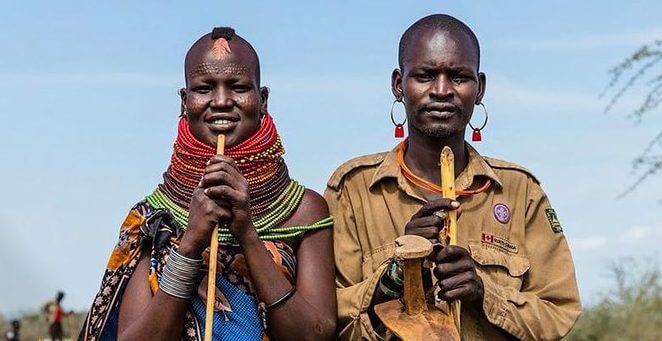Uganda, a country nestled in the heart of Africa, is home to a rich and diverse cultural heritage. One of the most fascinating aspects of Ugandan culture is the traditional practices of the Karamojong people, a pastoralist community residing in the northeastern region of the country. The Karamojong people are renowned for their distinctive facial markings and body piercings, which hold profound cultural and traditional significance.
The traditional Karamojong are generally tall and have a darker skin complexion, possibly because of exposure to the sun in their semi-arid homesteads. Traditional Karamojong have facial markings and body piercings on the nose, ears, lower lips, and other parts that convey a hidden message amongst them.
The Karamojong people adorn their faces with intricate markings, which are an integral part of their cultural identity. These markings are made using a sharp blade or thorn, and the process is often painful and time-consuming. The markings vary in design and pattern, depending on the individual’s age, gender, and social status.
Markings and body piercings are considered a beauty enhancement, adding elegance and charm to the individual.
Body piercings are another significant aspect of Karamojong culture. Both men and women wear piercings on their ears, noses, and lips, which are adorned with intricate jewellery made from natural materials like wood, bone, and shells.
According to Gladys Napeyok, a leader in Napak district, body piercings and facial markings are a sign of identity to distinguish the Karamojong people from other tribes and signify their cultural affiliation.
“They do it for identity. When someone has pricked their ears, it means at the time of any celebration they have dungles they wear as they express the dances, especially with men,” Napeyok said.
Elsie Yapcherukut, a Karamajong from Kaabongo district, stated that markings indicate an individual’s status within the community, reflecting their wisdom, strength, and leadership abilities.
“If someone has been a raider, every time they kill an enemy while in the struggle with animals in the bush, they make a cut on their body. If one has shot like one enemy, they make that cut on my body along the chest, shoulders, and hands. The more markings, the more enemies one has killed,” Yapcherukut said.
However, according to other sources, the Karamojongs also believe that the person who has markings around the face has done it for health reasons.
“If someone has a lot of headaches, they tend to cut the sides and put local herbs that suck the blood after cutting, which they believe is bad blood causing the headache. That is why you find those cuts around the ears and face. It is believed that tattooing below the chest is a treatment for the pancreas. They believe that releasing that blood relieves you from the pain,” the source said.
The Karamojong facial markings and body piercings are more than just physical adornments; they embody the community’s history, values, and beliefs. These traditional practices have been passed down through generations, preserving the cultural heritage of the Karamojong people. By understanding and appreciating these customs, we can foster greater respect and appreciation for Uganda’s diverse cultural landscape.
